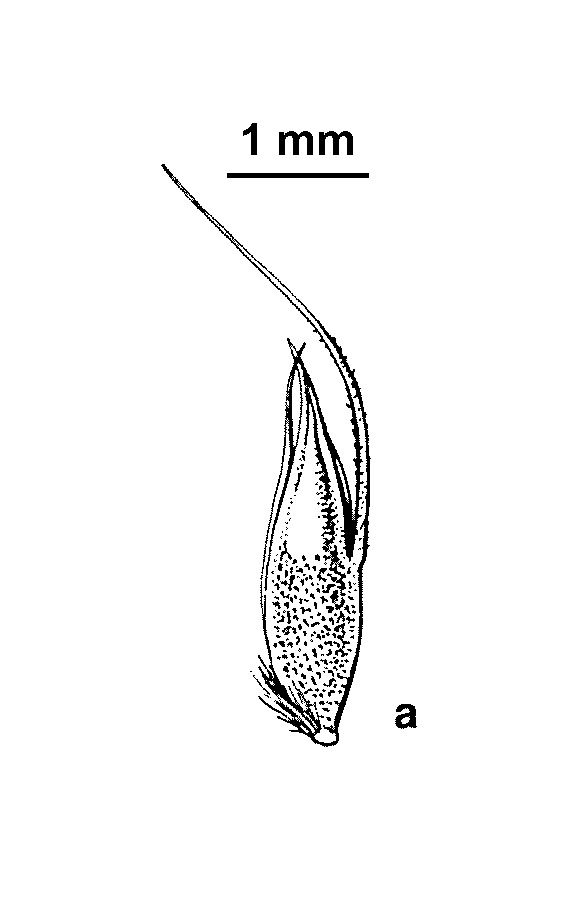Deyeuxia minor
F.Muell. ex Benth. Small Bent-grassSlender tufted, glabrous perennial, culms ascending or erect, to 50(–100) cm high. Leaf-blades flat or folded, to 15 cm long and 2(–7) mm wide, smooth or finely scabrous, often flaccid; ligules obtuse, mostly 1–2 mm long (but to 7 mm in very robust specimens). Inflorescence typically a dense cylindrical panicle 1.5–4(–12) cm long. Spikelets (2.5–)3.2–3.8(–4.5) mm long and rather plump, green or more often purplish; glumes equal, acute, strongly scabrous along the keel; lemma c. three-quarters as long as spikelet, rather strongly constricted above midway, prominently 3–5-nerved, strongly scabrous below midway and along the nerves, shortly 4-toothed at apex, awned from about midway; awn as long as or longer than lemma, twisted in lower part; callus hairs to c. 0.8 mm long; rachilla bristle not produced. Flowers Nov.–Dec.
Wim, GleP, VVP, GipP, OtP, CVU, GGr, DunT, EGL, EGU, WPro, HSF, OtR, MonT, VAlp. Also SA, Tas. Generally confined to damp lowland sites in southern Victoria-e.g. lower Glenelg River, Casterton, Warrandyte, Wilsons Promontory (type locality), Corner Inlet and Genoa areas, but with isolated inland records from near the upper Thompson River at c. 1100 m (in 1990) and the Grampians (in the 1800s).
Particularly robust specimens of this normally slender species have been collected from near Dergholm and Mallacoota (in the far west and far east respectively). These specimens bear a strong superficial resemblance to the widespread D. quadriseta.
Walsh, N.G. (1994). Poaceae. In: Walsh, N.G.; Entwisle, T.J., Flora of Victoria Vol. 2, Ferns and Allied Plants, Conifers and Monocotyledons, pp. 356–627. Inkata Press, Melbourne.
 Spinning
Spinning

